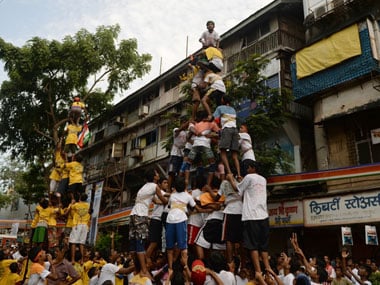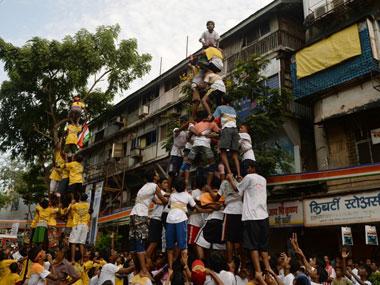The federation of mandals who organise dahi handi functions have told the Maharashtra government to allow their usual festivities or face a boycott of the festivities. They have given three days to the government to overcome the strict rules imposed by the courts – Mumbai and Supreme Court – on how to conduct the event. The idea that in doing so, the government - and they themselves - may get hauled up for contempt of court has not bothered them. If they don’t facilitate the dahi handi – the government would stand accused of blocking the ‘proper’ celebration of Hindu festivals. Soon after the court spoke its mind, a rattled Maharashtra government thought it had found a way out by declaring ‘dahi handi’ an adventure sport, which could be played as long as people were following rules. The rules including excluding children from the act. Maharashtra’s announcement says no one under 12 years age will be allowed to participate, and those between 12 and 15 years will require written parental approval. Even if it is called an adventure sport, it cannot be organised blocking public spaces like roads. Laws on sound pollution cannot be broken. Ambulances have to be kept ready, which is not the usual practice now. [caption id=“attachment_2410664” align=“alignleft” width=“380”]  A Dahi Handi celebration. AFP[/caption] Dahi handi follows Gokulashtami, celebrated as birthday of Lord Krishna who during his childhood, as myths have us believe, climbed on the backs of his playmates to steal the butter kept in pots out of his reach. Or perhaps, made pyramids. Like the ones in Mumbai and Thane region, where dahi handi is a rage. We however don’t know if that deity ever made very tall pyramids at all, like the record-breaking 43.79 feet tall that a mandal from Jogeshwari did in 2012. Nor whether his mother placed the pot of butter as high that so as to take nine tiers of humans. Of course, what the Gods can do or did cannot be easily replicated, and it needs superhuman effort, including plans and practice. The mandals do that, picking men and boys of right height, generally placing a kid at the top of the tier. With the attendant risks of course, of falling off, and injuring one’s limb, and in some cases, even losing lives. In doing so, they add some vigorous stuff, like kettledrums when reaching a dahi handi spot, or loud blaring music at the spot, keeping the adrenalin flowing. And at such locations where dahi handis are placed, a huge stage is crowded with film personalities – wrack your brains to ferret out the religious aspect of it – and film music, including use of disc jockeys. The sponsoring politician ensures that not many of his tribe gather there because it is his show for his constituency. It is like saying, ‘look here, this is my show, and enjoy, boys!’ Over a period, what were small affairs in the minor streets of Girgaon and the mill lands of Mumbai became an ‘event’ which needed to be professionally managed. Television crews also cover these events with great enthusiasm. The courts have gotten into the act keeping in mind the safety of the participants, and the need to reduce the nuisance – of blocked traffic and head-splitting music – without going into the fact, however, that the transport is on trucks, not allowed under motor vehicle rules. The courts have also ordered that the pyramids shall not exceed 20 feet in height, which makes the entire thing rather tame. Children are barred, and the locations are not to block roads. The rules apply to Ganapati too, in so far as use of roads are concerned. These, one supposes, is what should be an ordinary practice followed by people with common sense without the courts having to intervene. Huge monetary prizes are involved. In events sponsored by politicians, like Jitendra Awhad (NCP)’s big money is involved. In fact, Thane had overtaken Mumbai in this because of Awhad and another politician, Pratap Sarnaik (Shiv Sena). However, the threat of boycott – rather odd, for one does not boycott one’s own event – the festival as it was in the yore would continue in the lanes and bylanes without the swank and vulgarisation. All public religious festivities suffer from such vulgarisation, including Ganapati. What Lokmanya Tilak started is followed in only one chawl in Mumbai, Keshavji Naik Chawl – a small idol, constructive content of programmes every night. The residents take pride in such muted celebrations while others compete in how bigger their idol would be. Last year, restrictions were put on this practice. The din would be missing, but that is a presumption. We think nothing is celebrated unless the decibel levels are ear splitting. It is something to do with the community’s civic sense which has been on the wane.
We think nothing is celebrated unless the decibel levels are ear splitting.
Advertisement
End of Article
Written by Mahesh Vijapurkar
Mahesh Vijapurkar likes to take a worm’s eye-view of issues – that is, from the common man’s perspective. He was a journalist with The Indian Express and then The Hindu and now potters around with human development and urban issues. see more


)
)
)
)
)
)
)
)
)



